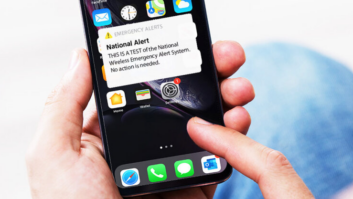This is part of a Radio World series in which we share industry opinions about AM revitalization.

The thing about the medium waves is that there isn’t very much you can do with them.
Remote controls, high data rate links, phone calls are all rather useless at MW. Unlike UHF, no one wants to pay anyone to clear out any chunk of any spectrum below 3 MHz for any new technology or service. The whole MW band (300 kHz–3 MHz) is less than half the bandwidth of a single TV Channel.
It seems as if virtually half of all the noise in the entire radio spectrum lands in MW. Efficient MW antennas inconveniently measure in the hundreds of feet.
MW/AM was reinvented at least once before. The original 1920s link budget had a few 250 Watt class transmitters on clear channels being received by long-wire antennas strung up to the silos on radio quiet land. The current link budget is kilowatts being received on ferrite loops and tiny wires buried in windshield glass.
REVITALIZATION
Even MW’s good traits are a mixed blessing.
At night, MW stations can cover the continent. Good if there are desolate places to reach and few stations (think agricultural 1930 America) … not so good if that coverage is just interference for other stations (think today, post urbanization and AM’s birth control issues).
VHF and UHF are much better behaved. They better stay in their markets, are high fidelity with low noise, and exhibit good penetration (MW’s aperture effect won’t even let it go under a bridge or through an open window).
So far, any attempt to “compatibly fix” the AM band with digital technology loads two adjacent channels with digital noise for everyone that it attempts to save, and it doesn’t seem to work that well at distances at night. Any conversion to all-digital would make zillions of radios into decorative furniture.

Besides, listeners looking for more stations to listen to can get an infinite number via the Internet right now, making the idea of running out to buy a new digital MW radio feature seem unreasonable. Oddly enough, if one just has to have more broadcast stations, and too many stations aren’t necessarily a good thing, the old TV spectrum adjacent to the FM band is much underused.
So, let’s just agree that trying to make MW into something that can compete with VHF, Internet and satellite is … well … as silly as building in a flood plain and expecting to not float away periodically. However, moving all AM stations to the old and much underused VHF TV slots works just fine.
Could it be that unwinding the MW/AM service with the goal of providing a few simulcast (from their new VHF allotments), wide area coverage and some really very accessible community low-power services is a more desirable revitalization of the MW band?
MY TWO CENTS
I would do two other things with the MW/AM band.
First, I’d provide space for a low-power AM service with a very low barrier to entry.
There really should be a way that any school, church, travelers information service or what-have-you can broadcast for a few miles for not a lot of money or brain damage, when they want, in such a way that it doesn’t hurt anyone. The top of the MW/AM band is perfect for that. One might even split that unused 1700–1800 between the hams and hyper-band broadcast AM. One might make this unlicensed and lightly regulated.
The other tweak is making all the big AM guys suppress one sideband.
Put a 1000 kHz in New York and Los Angeles, but on opposite sidebands so a good radio here in Denver can select between them. Let every top-100 metro have one or two 250 kW services, and not a lot else. Let every state have another one or two boomers.
Using the sideband technique, we have essentially 200 clear channel stations, giving every location a dozen or so daytime services and of course 200 nighttime. Canada and Mexico, which have more MW needy territory to cover, might play along, considering that a MW radio in much of the world receives nothing at all as MW services have been retired. In fact, Canada and Mexico should have more of a share of MW than the U.S. does in a fair world.
Odds are that this revitalized MW service would result in an interesting and convenient service that better answers the public interest, convenience and necessity. Even marginal AM stations move to better spectral ground too. Even the syndication guys win with FM (or digital) VHF signals in their markets, backed up by the occasional wide-area MW simulcast service for the truckers and denizens of the deserts and north woods. This is a case where we should move from flood plane to hilltop and build nicer places.
But mostly, a world of many interference-free diverse voices (all also available locally on VHF simulcasts) seems a better revitalization of the MW band than does a cacophony of sizzling digital wideband signals battling the laws of nature and nighttime propagation in an attempt to deliver a purely local service into places where MW just won’t go.
Truckers, campers, DXers, arm chair travelers, ultra rural residents and owners of antique furniture-quality AM radios, two dollar transistor radios and marginal MW stations … all win. That leaves only the digital-on-MW folks in the cold. Let’s hope they will be happy with being able to do all-digital on the VHF expansion and migration.
Let MW return to what it was born to do: a handful of low-fidelity services with divergent voices to the distant corners of the continent … a place for the unique voices of distant lands. MW is not incurably sick, and extraordinary high-tech resuscitation is not indicated.
The author is a broadcast engineer active in industry education and cutting-edge technology, mostly on the streaming and video side. His first love is AM radio. He says he has four 1,800-foot Beverage antennas and is “rebuilding a Gates BC-1F like some people rebuild old Mustang convertibles.”
Comment on this or any story. Email radioworld@nbmedia.com with “Letter to the Editor” in the subject field.






